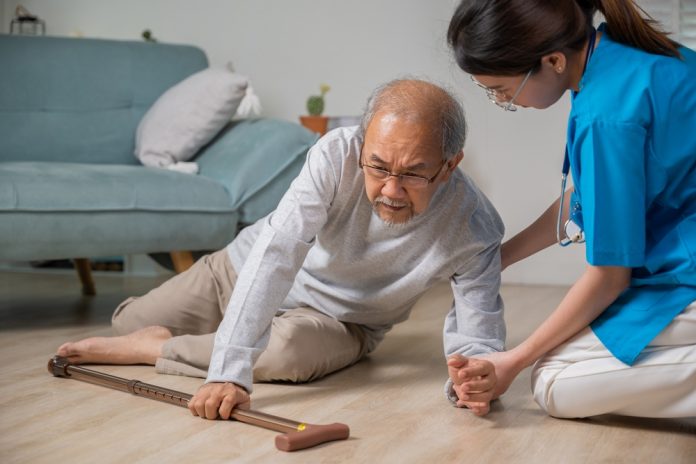Falls are one of the leading causes of injuries among individuals, particularly as we age. Whether it’s a minor stumble or a serious fall, the impact can be both physical and emotional. The good news? Maintaining good balance isn’t just for acrobats and tightrope walkers—it’s a skill that can be improved with intention and practice. Here are seven simple yet effective ways to enhance balance and reduce the risk of harmful falls, ensuring you stay steady on your feet and confident in your stride.
- Strengthen Your Core
Your core muscles—those in your abdomen, lower back, and pelvis—are the unsung heroes of balance. A strong core acts like a stabiliser, helping you maintain control during everyday activities, from walking to bending over. Incorporate exercises like planks, bridges, or gentle yoga poses such as the cat-cow stretch into your routine. These not only strengthen your core but also improve overall posture, which is essential for staying upright.
If you’re starting out, even simple seated exercises that engage the core, like seated marches, can make a noticeable difference over time.
- Practise Balance Exercises Daily
Like any skill, balance improves with practice. Dedicate a few minutes each day to specific balance exercises. One of the simplest is standing on one leg—first with support, then gradually without it. Try the “heel-to-toe walk,” where you walk in a straight line placing one foot directly in front of the other.
If these exercises feel challenging, don’t be discouraged. The aim isn’t perfection; it’s progress. As your confidence grows, you’ll notice better stability not just during the exercises but in daily activities too.
- Wear the Right Footwear
Your choice of footwear plays a significant role in maintaining balance. Shoes with sturdy soles, a snug fit, and good arch support can help prevent trips and slips. Avoid high heels, loose slippers, or footwear with worn-out treads.
If you’re indoors, consider non-slip socks or shoes designed for home use. They provide comfort and grip without compromising stability.
- Mind Your Surroundings
Creating a safe environment at home is crucial to preventing falls. Simple adjustments can make a world of difference. Ensure pathways are clear of clutter, wires, or loose rugs that can cause trips. Install grab bars in areas like bathrooms, where floors can be slippery. Adequate lighting is another essential—dim corners or staircases increase the risk of missteps.
Being mindful of your surroundings isn’t about living in fear; it’s about creating a space where you can move confidently without unnecessary risks.
- Stay Active with Low-Impact Exercises
Physical activity is vital for maintaining balance, flexibility, and strength. Low-impact exercises such as tai chi, swimming, or walking are excellent options. These activities not only keep your muscles and joints active but also improve coordination.
Tai chi, in particular, is known for its focus on slow, deliberate movements and weight shifts, making it a powerful practice for enhancing balance and mindfulness.
- Fuel Your Body Right
Nutrition may not be the first thing you think of when it comes to balance, but it’s an essential factor. Calcium and Vitamin D are crucial for maintaining strong bones, reducing the risk of fractures in the event of a fall. Include dairy products, leafy greens, and fortified foods in your diet.
Stay hydrated too—dehydration can lead to dizziness and an increased risk of falling. Avoid alcohol or excessive caffeine, which can affect your equilibrium.
- Get Your Eyes and Ears Checked
Balance isn’t just about muscles; your senses play a significant role too. Vision problems can make it harder to navigate spaces, while issues with the inner ear (which controls balance) can cause dizziness. Regular check-ups with your optician and audiologist can identify any underlying problems early.
Don’t ignore new symptoms such as blurry vision or persistent light-headedness—they could be signs of something that needs medical attention.
The Bigger Picture: Confidence and Independence
Improving balance isn’t merely about avoiding falls; it’s about maintaining independence and confidence in your ability to move through life without hesitation. Whether it’s walking up the stairs, reaching for something on a high shelf, or simply taking a stroll in the park, a good sense of balance enables you to engage fully in everyday activities.
Start small. Incorporate one or two of these practices into your routine and build from there. Each step—no matter how minor it seems—moves you closer to greater stability and peace of mind.
Remember, balance is a skill for life. It’s never too early or too late to start improving it. So stand tall, take steady steps, and trust in your ability to regain control over this vital aspect of your well-being. With consistent effort and a little patience, you’ll find yourself moving with greater ease and confidence.
Let your journey towards better balance begin today—because a steady life is a safe and fulfilling life.








